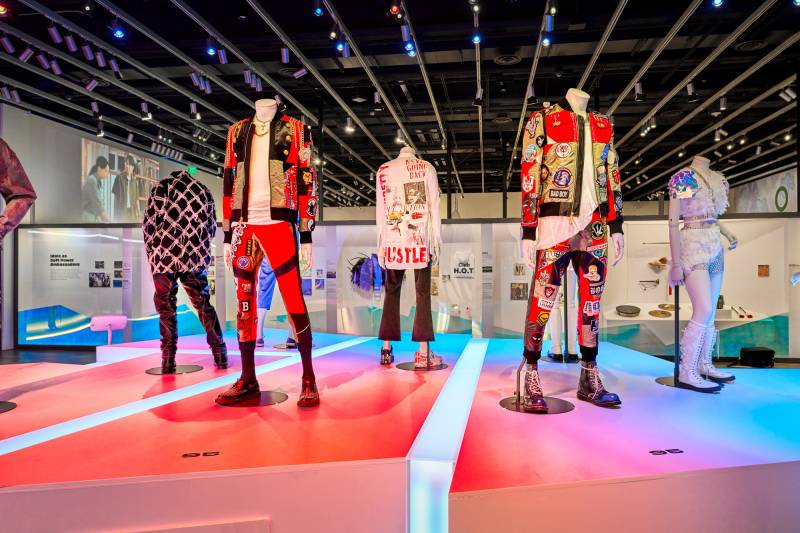South Korea’s influence on American popular culture has been evident for a while: Parasite became the first foreign film to win Best Picture at the 2020 Oscars; the Biden administration welcomed BTS to the White House for a visit just two years ago; and achieving ‘glass skin’ is only the latest K-beauty trend on TikTok right now.
The country’s phenomenal reach is called hallyu, a Chinese term coined in the late ’90s that translates to “Korean wave.” It’s used to refer to the global growth in popularity of Korean culture, including film, music, fashion and skincare. Now, it’s the focus of the newest exhibition at the Asian Art Museum of San Francisco, opening Friday, Sept. 27: Hallyu! The Korean Wave.
Right off the bat, the exhibition design, including color schemes and lighting setups, is meticulous. The show begins in darkness, save for spotlights illuminating artifacts, photos and a few pieces of art. This darkness is key; it engulfs visitors and grounds them in South Korea’s history: resistance against Japan’s occupation; the Korean War and the country’s recovery from it; and the emergence of a new South Korean economy. Objects in this opening section not only serve as a physical archive, they lay the groundwork for how brands like Samsung and Hyundai became entwined with everyday American life, and how they opened the door for even more of the country’s cultural output.

Clearly, the curators, including the Asian Art Museum’s Yoon-Ji Choi, have spent a lot of time thinking about the audience this exhibition will draw in (the show was organized with the Victoria and Albert Museum in England). The exhibition’s title wall, rendered in an iridescent, rainbowy color, was picked out of consideration, Choi says, for K-pop fans, whose fandoms often identify with specific, official colors. Not wanting to risk accidentally selecting colors that showed a preference for one group over another, curators opted for the entire color spectrum in hopes of making every fan feel welcome.
To demonstrate what today’s hallyu influence looks like, the Asian Art Museum presents artifacts from its own collection alongside examples of fashion trends from K-dramas and K-thrillers. This includes an interactive piece inspired by the six-time Emmy Award-winning show Squid Game, complete with ominous-looking mannequins wearing the infamous red-hooded jumpsuits and black fencing masks. K-cinema fans will immediately recognize the immersive Parasite installation, which allows visitors to literally step into the cramped Kim family home.

Don’t worry about accidentally missing the music section as you weave through the exhibition, because you’ll hear it before you see it, trust me. Before I could even begin processing Korea’s rich musical history, I immediately recognized the first few bars of “Dumb Dumb” by Red Velvet playing on blast.


